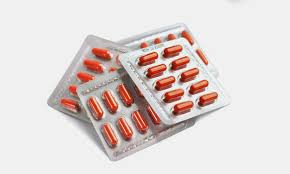Unit Dose Medication: An In-Depth Overview

used in hospitals, clinics, long-term care facilities, and pharmacies to ensure that patients receive the correct medication in the proper dose. This article explores the concept of unit dose medication, provides examples, outlines its benefits, and discusses how it has revolutionized the pharmaceutical and healthcare industries.
What is Unit Dose Medication?
Unit dose medication is a method of dispensing and delivering medications in individual, pre-measured doses. Each dose is packaged separately, and the package is usually labeled with important information such as the medication’s name, strength, expiration date, lot number, and patient details. This system minimizes the chance for medication errors, enhances safety, and ensures that each dose is administered at the right time and in the correct amount.
The term “unit dose” refers specifically to the fact that each medication dose is contained in a single unit, or packet, making it easier for healthcare providers to administer the medication accurately without the need for further calculations or measuring. This system is especially beneficial in environments like hospitals, where numerous medications are dispensed throughout the day.
Examples of Unit Dose Medications
There are many examples of unit dose medications, ranging from tablets and capsules to injections and intravenous fluids. Here are some common types of unit dose medications:
- Oral Tablets and Capsules:
- Aspirin: One of the most well-known examples, aspirin is often available in unit dose packages that contain a single tablet or a set of tablets intended for a specific dose.
- Acetaminophen: This over-the-counter pain reliever is often distributed in blister packs, with each pack containing a single dose of two or more tablets.
- Antibiotics: Medications like amoxicillin and azithromycin are commonly dispensed in unit doses, with each packet or blister containing the exact prescribed number of tablets or capsules for the patient’s dosage.
- Injectables:
- Insulin: Injections of insulin, a critical medication for diabetes management, are often pre-filled in unit dose vials or syringes. These units are convenient for patients who require insulin multiple times a day.
- Morphine: For patients undergoing surgery or in severe pain, morphine is frequently dispensed in unit dose vials, ensuring that only the prescribed amount is administered.
- Intravenous Fluids:
- Saline Solution: Saline fluids are often packaged in unit dose bags or bottles for intravenous use in hospitals or clinics. These solutions are commonly used to hydrate patients or administer medications through an IV drip.
- Potassium Chloride: Potassium chloride is often administered intravenously and comes in single-dose vials or bags to ensure the correct dosage is delivered safely.
- Topical Medications:
- Hydrocortisone Cream: In dermatology, hydrocortisone or other topical steroids are often packaged in small, single-use tubes for convenience and accurate application.
- Antiseptic Wipes: Wound care products, such as antiseptic wipes, are frequently distributed as unit doses, providing a single wipe per packet for the proper application.
- Eye Drops:
- Antibiotic Eye Drops: Medications like ciprofloxacin or ofloxacin used for treating eye infections are often available in single-dose containers. This method helps ensure the patient receives the correct number of drops and maintains sterility.
- Inhalers:
- Albuterol Inhalers: For patients with asthma or chronic obstructive pulmonary disease (COPD), albuterol inhalers may be provided as unit doses, ensuring precise control of the medication amount per puff.
- Liquid Medications:
- Cough Syrup: Liquid medications, such as cough syrups, may come in unit-dose vials or pre-measured cups. These pre-packaged doses help patients adhere to the prescribed dosage without the risk of over- or under-measuring the medication.
Benefits of Unit Dose Medication
The use of unit dose medications offers a variety of benefits for both healthcare providers and patients. These advantages range from improving medication safety to simplifying the administration process.
- Reduced Medication Errors:
- One of the most significant benefits of unit dose medications is the reduction of medication errors. With pre-measured doses, there is less opportunity for healthcare professionals to miscalculate or mistakenly administer the wrong dosage. The packaging is typically labeled with all necessary information, such as the drug name, strength, and patient details, which further reduces the likelihood of errors.
- Improved Patient Safety:
- Unit dose medications help ensure that patients receive the right medication at the right time, preventing under- or over-dosing. By eliminating the need for manual preparation, the risk of contamination or mix-ups is minimized. This is especially important for patients who require critical medications, such as those in intensive care units (ICU) or on complex drug regimens.
- Increased Convenience:
- Unit dose packaging makes it easier for both healthcare providers and patients to manage medications. For example, in hospitals, nurses can quickly grab the correct dose from a unit dose cart without needing to open multiple bottles or vials. This improves efficiency and saves valuable time.
- For patients, unit dose medications eliminate the need for measuring liquid medications or splitting tablets, making it easier to follow the prescribed treatment plan.
- Better Inventory Control:
- Unit dose medications are often easier to track in terms of inventory management. Healthcare providers can quickly determine how much medication is available, and the pre-packaged doses reduce the chances of wastage from unused or leftover medication. The precise dosing also helps prevent patients from receiving outdated or expired medications.
- Enhanced Compliance:
- Pre-packaged unit doses are helpful for patients who may struggle with medication adherence. The clear labeling and convenient packaging ensure that patients take the right dose at the correct time. Additionally, healthcare providers can monitor medication usage more effectively and provide reminders for upcoming doses.
- Reduction in Waste:
- Unit dose packaging often leads to less waste because patients only receive the exact amount of medication they need. This is especially beneficial for expensive or high-demand medications that could otherwise be wasted if not used properly.
- Sterility and Safety:
- For injectable medications and intravenous solutions, unit dose packaging ensures sterility and protects against contamination. Each dose is individually sealed and protected from environmental factors, which is particularly important for medications that require a controlled environment.
Challenges and Considerations
While unit dose medications offer numerous advantages, there are some challenges and considerations that need to be addressed.
- Cost Considerations:
- Unit dose packaging often involves higher costs due to the packaging materials and labor involved in preparing the individual doses. These costs can add up for healthcare systems, especially in large facilities or for expensive medications. However, these costs are often justified by the safety and efficiency gains they provide.
- Space and Storage:
- Storing unit dose medications requires adequate space. Healthcare providers must ensure that they have sufficient storage space for unit dose medication carts or dispensers. These systems also need to be properly organized to ensure that medications are easily accessible when needed.
- Waste of Unused Doses:
- While unit dose medications help reduce overall medication waste, there is still potential for unused doses to be discarded. For instance, in certain cases, patients may not finish a full dose of a medication before it expires, leading to some wastage.
- Training Requirements:
- Healthcare professionals may need to undergo additional training to familiarize themselves with the unit dose system. This is particularly true for new staff members or in facilities that are transitioning from a traditional medication dispensing method to unit dose systems.
Unit Dose in the Future of Healthcare
The future of healthcare will likely see an increased reliance on unit dose medication systems. As healthcare facilities continue to prioritize patient safety, efficiency, and medication adherence, unit dose medications will play a pivotal role in improving outcomes. The evolution of medication delivery systems, such as the integration of technology to manage and track medication administration, could make unit dose medications even more effective and user-friendly.
For example, automated dispensing systems that use barcodes or RFID technology can streamline the distribution of unit dose medications, ensuring that patients receive the correct doses and minimizing human error. Additionally, unit dose medication may become more personalized, with advancements in pharmacogenomics helping to tailor medication doses to individual patients’ genetic profiles.
Conclusion
Unit dose medication has revolutionized the way pharmaceuticals are dispensed and administered, offering significant benefits in terms of safety, convenience, and accuracy. The practice ensures that patients receive the correct medication in the right dose, improving medication adherence and reducing the chances of errors. While challenges such as cost and storage space exist, the advantages far outweigh the drawbacks, particularly in hospital and long-term care settings. As healthcare continues to advance, unit dose medication will remain a cornerstone of efficient, safe, and effective treatment for patients worldwide.





